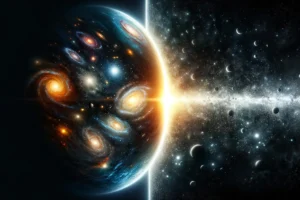The Life and Death of Stars: A Stellar Odyssey
9 min read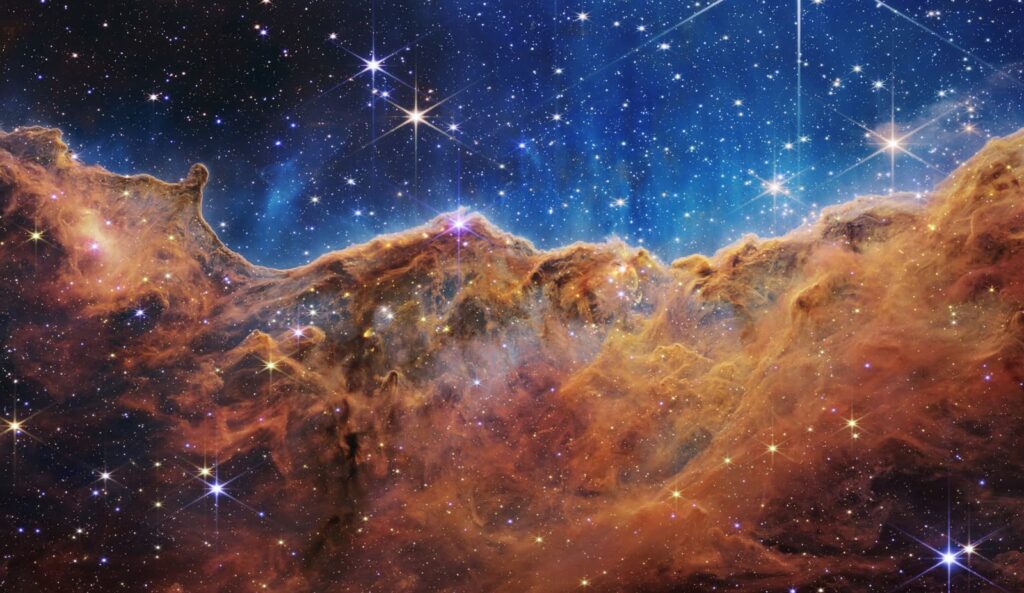
Stars, those brilliant celestial bodies that adorn our night sky, have captivated human imagination for eons. They’re not just points of light; they’re cosmic giants with incredible lifecycles, ranging from birth to death. In this article, we will embark on a stellar odyssey, exploring the fascinating journey of stars through the cosmos. If you wish to purchase a telescope but lack the funds to do so, you can get a quick loan from loan origination software.
Stellar Birth: The Genesis of Celestial Giants
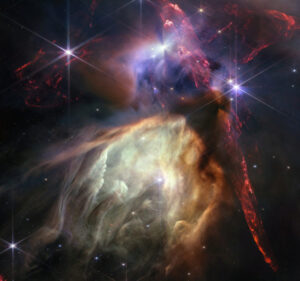
Stars are born within vast, dusty regions of space known as stellar nurseries. These nurseries, often found in nebulae, hold the raw materials for star formation. When a section of a nebula becomes gravitationally unstable, it begins to collapse in on itself. This collapse triggers a cascade of events that lead to the birth of a star.
The heart of this collapsing cloud becomes a protostar, a dense core with temperatures soaring as it accrues matter. Protostars are surrounded by a rotating disk of gas and dust, from which planets and other celestial bodies may eventually form. Over millions of years, as the protostar accumulates mass, the core’s temperature and pressure rise until nuclear fusion ignites. At this point, the star officially comes to life, heralding a new addition to the cosmic tapestry.
Stars come in various sizes, and their mass determines their destiny. Small stars, known as red dwarfs, burn their fuel slowly, leading to incredibly long lifespans—potentially trillions of years. Conversely, massive stars, like blue giants, live fast and die young.
Massive stars, at least eight times the mass of our Sun, follow an intense path. Their core temperature and pressure are so extreme that they can fuse elements up to iron in their cores. This process releases tremendous energy in the form of light and heat, powering the star’s brilliance.
If you want to watch the stars on your roof you can contact roofing contractors in Pennsylvania to adapt it for it.
The Radiant Middle Age: Stellar Fusion and Energy Production
Stars are celestial powerhouses, fueled by the process of nuclear fusion. Within their cores, hydrogen atoms fuse to form helium, releasing a colossal amount of energy in the form of light and heat. This energy is what keeps stars shining for millions or even billions of years. Most organizations that make astrological observations have their own websites which were created and professionally furnished by branding services.
During their main sequence phase, stars are stable and balanced. Our own Sun is currently in this phase, and it’s been for about 4.6 billion years. It will remain in this state for several billion more years before evolving.
As a star ages, it reaches a critical point when the hydrogen in its core begins to deplete. The balance between gravity pulling inward and the pressure from nuclear fusion pushing outward becomes fragile. To counteract the gravitational collapse, the star must undergo a transformation.
If you want to travel to a stargazing spot but your car engine is not working check out engine services in Toronto.
The Late Stages: The Stellar Endgame
When a star exhausts its hydrogen fuel, its core contracts and heats up. This process triggers the next phase of a star’s life, which depends on its mass. For low to medium-mass stars, like our Sun, the core contracts and heats until helium fusion begins in a shell around the core. This causes the star’s outer envelope to expand, and it becomes a red giant.
During this phase, the star’s outer layers expand and engulf any nearby planets, including Earth in the distant future. Eventually, the outer layers are ejected into space, creating a beautiful shell of gas and dust known as a planetary nebula. What remains of the core contracts further, becoming a white dwarf—a dense, Earth-sized remnant that gradually cools and fades away.
In contrast, massive stars undergo a more dramatic transformation. After burning helium to heavier elements, they go through a series of explosive events. This can include multiple supernova explosions, each releasing more energy than our Sun will in its entire lifetime. In the final stage, the core collapses under the force of gravity, forming either a neutron star or a black hole, depending on its mass.
You can watch stars with your telescope and if your telescope is broken be sure to contact a company that provides appliance repair in Charlotte NC.
Cosmic Recycling: The Legacy of Stellar Deaths
As stars meet their inevitable ends, they leave behind a rich legacy. The elements forged within their cores are scattered into space during supernova explosions, enriching the cosmos with heavy elements like carbon, oxygen, and iron. These elements are the building blocks of planets, including our own, and even life itself.
Stars are the cosmic engines responsible for the creation of new solar systems and the evolution of galaxies. The elements they produce find their way into new generations of stars, providing the materials necessary for the formation of planets and, potentially, life.
If you live in Minneapolis and you want to move to a city with a clearer sky so you can observe the stars you can contact Minneapolis movers.
The Cosmic Symphony: Stellar Clusters and Multiple Star Systems
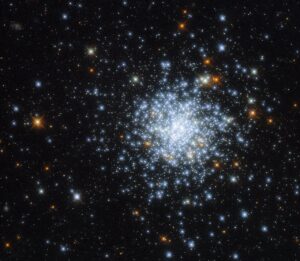
As we delve deeper into our exploration of stars, it’s crucial to recognize that they don’t always exist in isolation. In fact, many stars are part of stellar clusters or multiple star systems, adding a fascinating layer of complexity to their lives.
Stellar Clusters: These are groups of stars born from the same stellar nursery. They share a common origin and often have a similar age and chemical composition. Stellar clusters come in two main varieties: open clusters and globular clusters.
- Open Clusters: These are relatively young and contain a few hundred to a few thousand stars. They are loosely bound and eventually disperse as their member stars age and move apart. The famous Pleiades, also known as the Seven Sisters, is an example of an open cluster.
- Globular Clusters: These are much older and contain thousands to millions of stars densely packed in a spherical shape. Globular clusters orbit the center of galaxies and are some of the oldest objects in the universe.
Multiple Star Systems: Many stars, when formed, don’t end up alone. They are part of multiple-star systems where two or more stars are gravitationally bound to one another.
- Binary Stars: The most common type of multiple-star system consists of two stars orbiting a common center of mass. This dance of binary stars can vary from close, where the stars almost touch, to wide, where they are separated by vast distances.
- Triple and Quadruple Stars: In some systems, three or even four stars can be found in complex orbits. These arrangements can be stable for millions of years, and the interactions between stars in such systems can be intricate and intriguing.
The study of stellar clusters and multiple star systems provides valuable insights into the formation and evolution of stars. It’s a testament to the dynamic nature of the cosmos, where stars come together and perform celestial ballets that continue to captivate astronomers and astrophysicists. If you are interested in night photography you can visit a photo studio in Vancouver.
The Cosmic Recycling Center: Supernovae and Stellar Nucleosynthesis
We’ve already explored how massive stars meet their dramatic ends in spectacular supernova explosions. But these cosmic fireworks are not just about the demise of stars; they play a crucial role in the creation of new elements in a process known as stellar nucleosynthesis.
Serbia has a couple of amazing stargazing spots and you can travel there by renting a vehicle from rent a car Beograd.
When a massive star goes supernova, the explosion is so powerful that it can briefly outshine an entire galaxy. This release of energy and intense pressure drives the fusion of heavier elements, such as gold, silver, and uranium, in a matter of moments. These elements are then ejected into space, enriching the surrounding interstellar medium.
Stellar nucleosynthesis occurs in both the fiery core of massive stars and in the explosive aftermath of a supernova. This process is responsible for the formation of elements beyond hydrogen and helium, which were the primary elements produced in the early universe.
As these enriched materials disperse into space, they become part of the raw ingredients for new stars, planets, and, potentially, life. In essence, every atom in our bodies and the world around us has, at some point, passed through the fiery crucible of a star’s birth, life, and death.
If you want to work as an engineer in NASA be sure that your team has an engineering expert witness.
The Enigmatic Aftermath: Neutron Stars and Black Holes
When massive stars reach the end of their fusion journey, they face a transformative crossroads. The result of this decision hinges on their mass, with two possible outcomes: neutron stars and black holes.
Neutron Stars: For stars between about 8 and 20 times the mass of our Sun, the core collapse during a supernova leads to the formation of a neutron star. These incredibly dense objects pack the mass of a few Suns into a sphere just a few kilometers wide. Neutron stars possess some truly mind-boggling properties.
- Pulsars: A subset of neutron stars, known as pulsars, emit beams of radiation from their magnetic poles. As they rotate, these beams sweep through space, creating a pulsing effect. Pulsars are like cosmic lighthouses, and their precise timekeeping has practical applications, such as in GPS systems. Did you know that pulsars can affect people who use bioboost?
Black Holes: For stars more massive than 20 times the mass of the Sun, the core collapse results in the formation of a black hole. These are regions of space where gravity is so intense that nothing, not even light, can escape. Black holes come in various sizes, from stellar-mass black holes to supermassive black holes at the centers of galaxies.
The existence of black holes has been a topic of intense fascination and scientific inquiry. They challenge our understanding of the laws of physics and offer a glimpse into the most extreme and mysterious regions of the universe.
If you want to invest in your yard so you can relax and stargaze every night you can employ a company that does landscaping in Florida.
The Cosmic Recycling Continues: Planet Formation
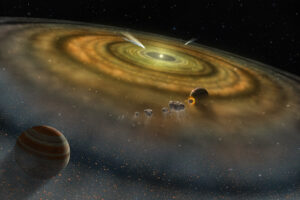
As we’ve journeyed through the life and death of stars, we’ve witnessed the creation of heavy elements and their dispersal into space. These elements are crucial for the formation of planets and, potentially, the conditions for life.
Within the debris of supernova explosions and the remnants of planetary nebulae, new generations of stars and planetary systems form. Dust and gas clouds, enriched with heavy elements, coalesce to create protoplanetary disks. These disks are the birthplaces of planets, moons, asteroids, and comets.
In these disks, microscopic dust particles clump together, forming planetesimals. Over eons, these planetesimals collide and grow, eventually giving birth to planets. The formation of our own solar system followed this pattern, as the Sun’s protoplanetary disk condensed into the planets we know today.
Fishing under the stars is amazing if you are into that sport, just be sure to use a fishing forecast so you can choose the perfect weather for your adventure!
The Star’s Lament: The End of the Stellar Show
Throughout our stellar odyssey, we’ve journeyed from the birth of stars in stellar nurseries to their dramatic deaths in the fiery explosions of supernovae. We’ve explored the intricate dance of stars in multiple star systems and the cosmic recycling of elements in the intense crucible of stellar nucleosynthesis. If you are interested in becoming an astronomer you can take a career quiz to see if it fits your skills.
Now, as we approach the conclusion of our journey, it’s essential to recognize that the story of stars is a never-ending cosmic cycle. Stars are born, they shine brightly, they evolve, and they eventually meet their cosmic destiny. Their legacies live on in the form of planets, new stars, and the potential for life to flourish in the universe.
As we gaze up at the night sky, let us remember that every star we see has its own unique story, its own path in the stellar odyssey. While we have unveiled many secrets about stars, the universe continues to hold countless mysteries, waiting for future generations of explorers to unravel.
Did you know that stargazing is a great way to relax and it can help you if you don’t know how to prevent academic burnout.
The life and death of stars are but a chapter in the cosmic story, a story that continues to unfold, revealing its secrets to those who dare to look up and wonder. In our quest to understand the universe, we are not just observers; we are participants in the grand narrative of the cosmos.
